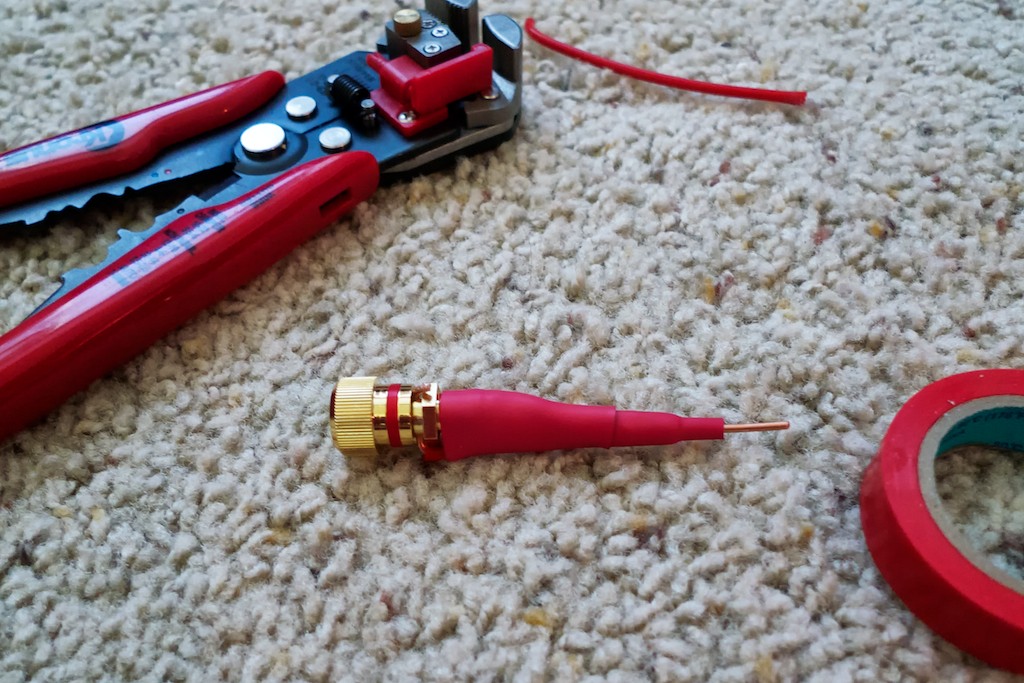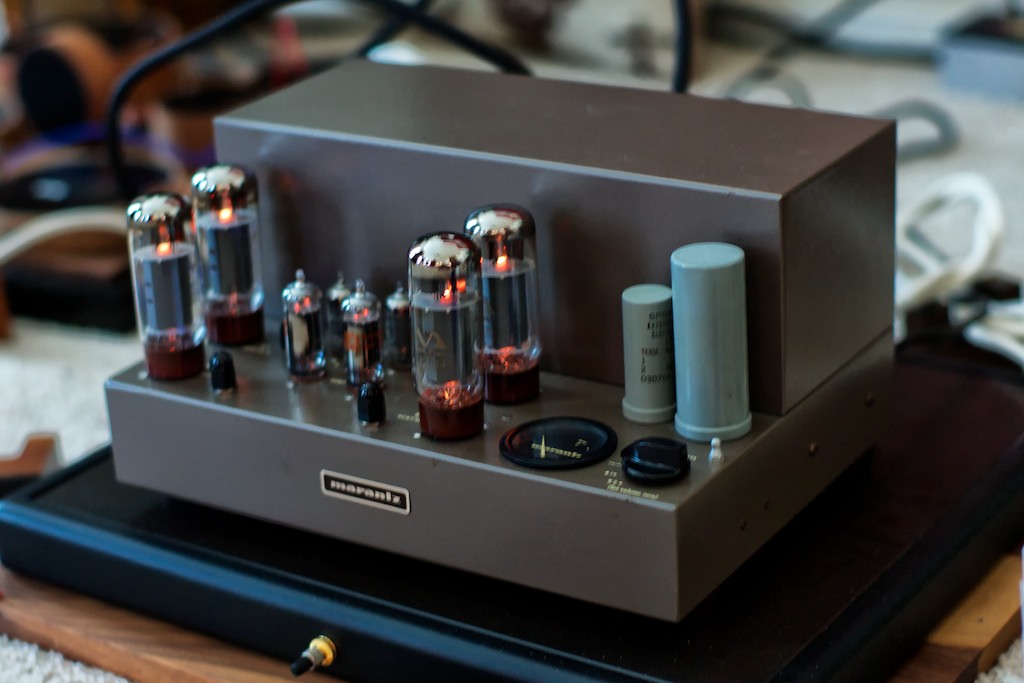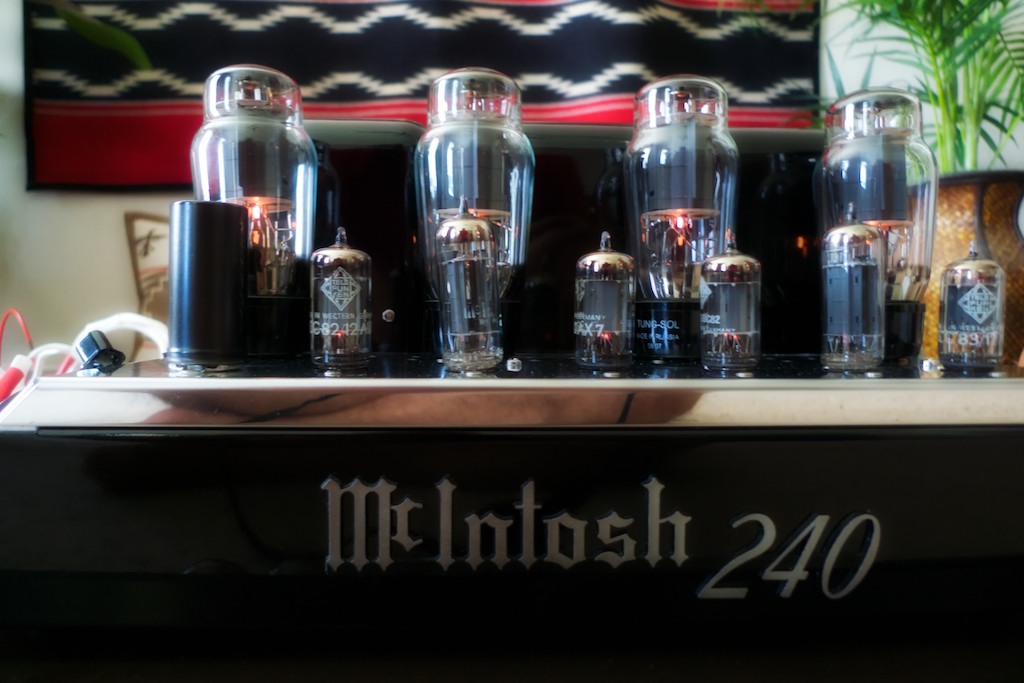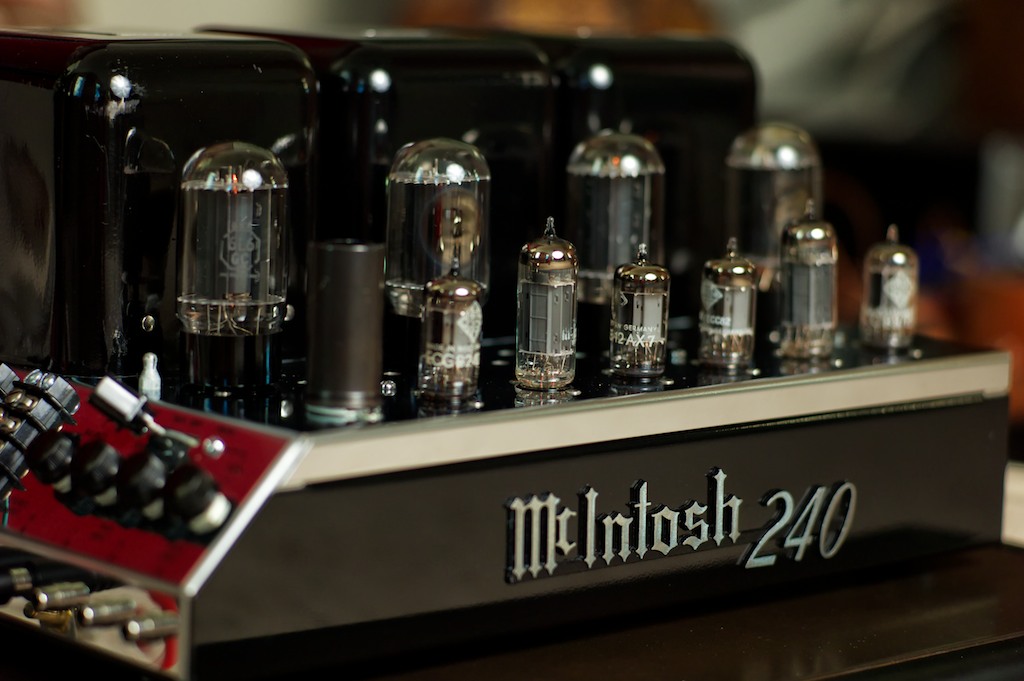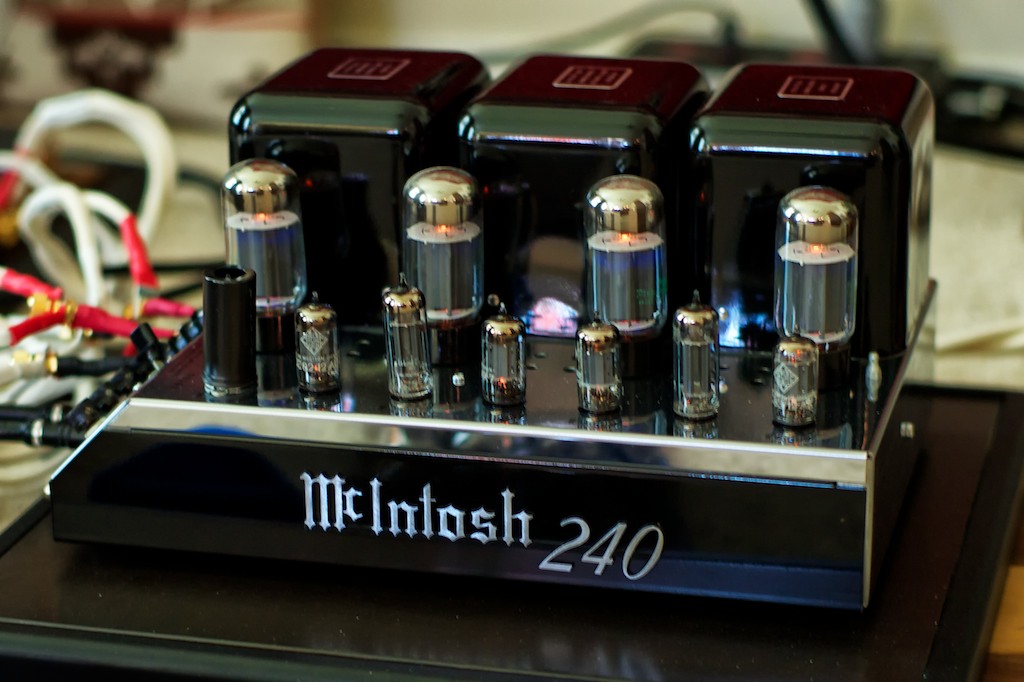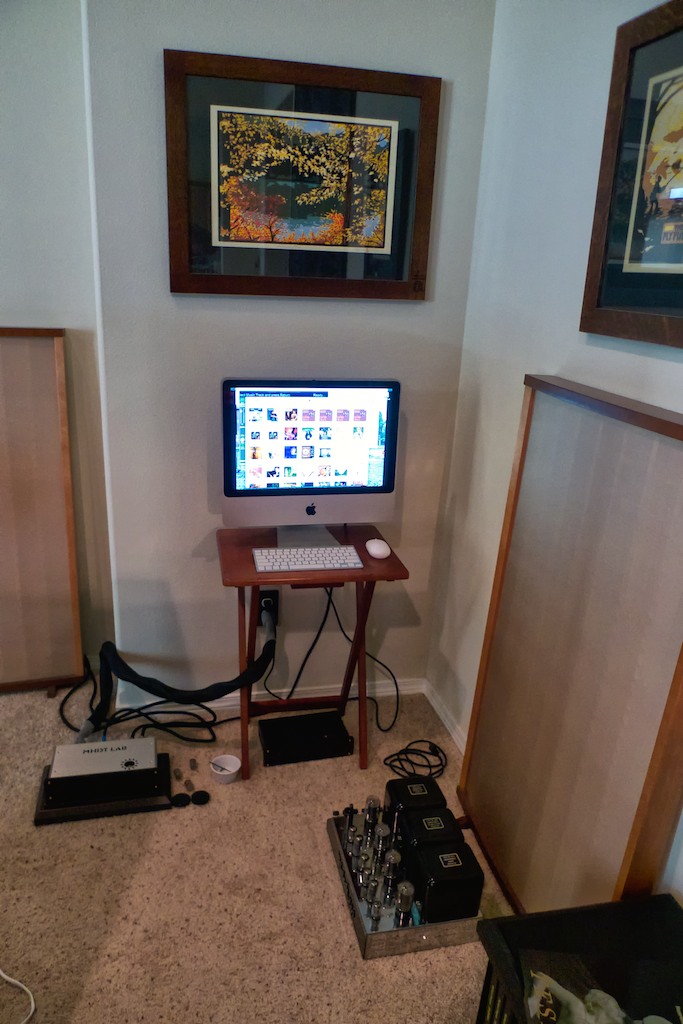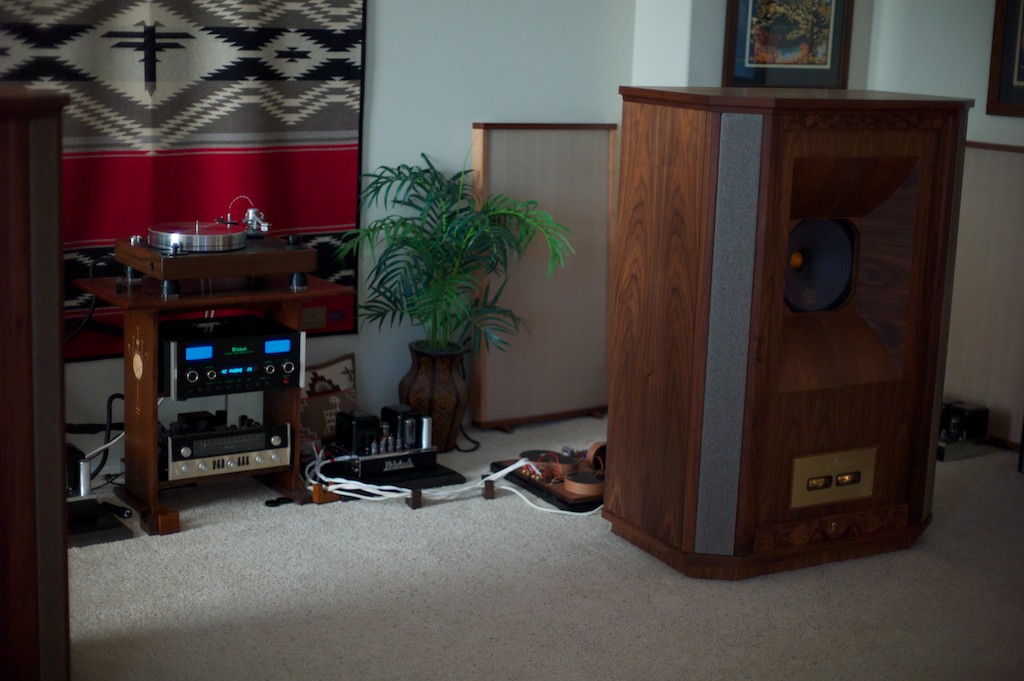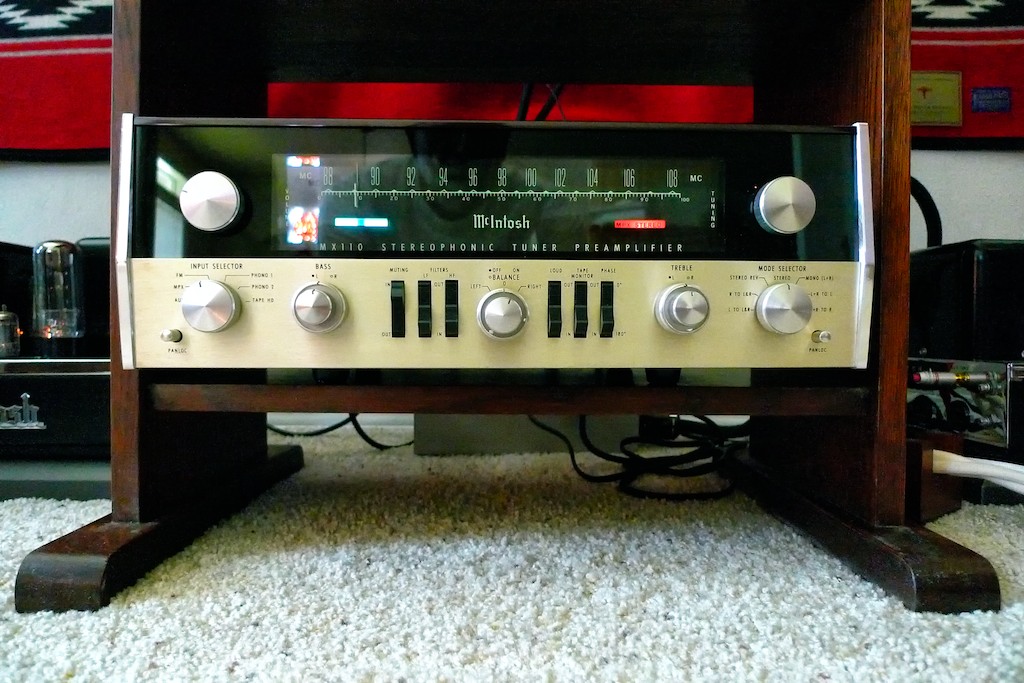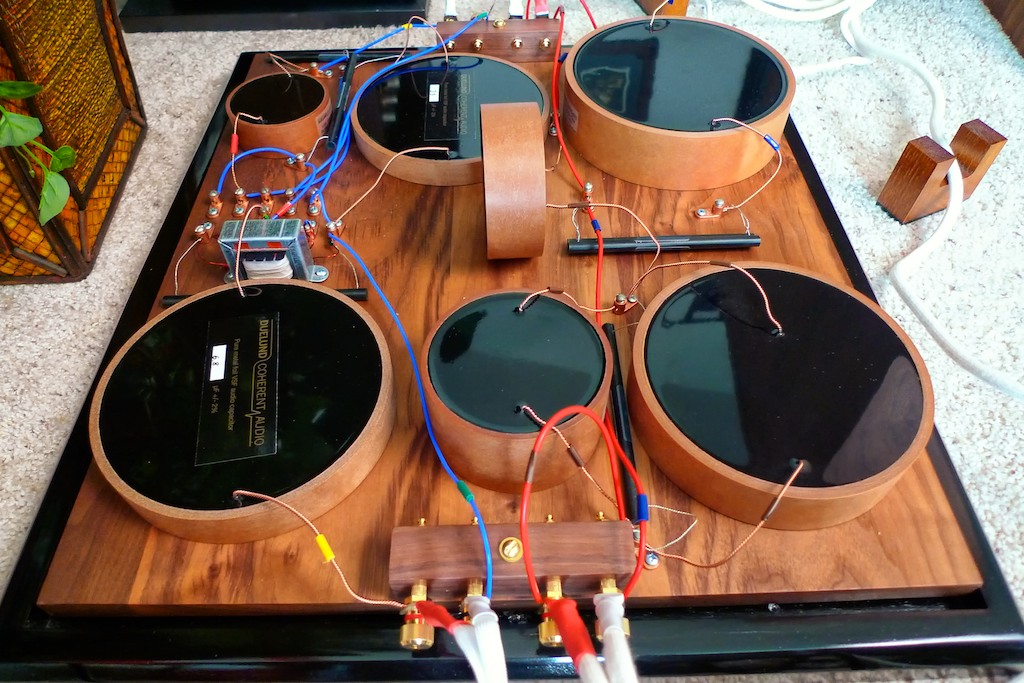On Sunday afternoon Ron (center) and Leo (left) joined me for a fine day of hi-fi fun and games, and as usual we had a ball! (Sorry for the blurry photo. Note to self: remember to use the correct camera setting next time!)
After a lunch of a combo pizza and a few glasses of some mighty fine vino, we put together a set of binding post bypass style of speaker cable adapters for Leo's vintage McIntosh MC30 mono amps so he could use modern speaker cable connectors on his amps.
For those of you not familiar with the vintage amplifiers, they use terminal blocks with screws to connect speaker cables, from back in the days when people only used a bare wire end to connect loudspeakers, and modern connectors are just too big too fit into their tight confines.
Below, that's the terminal blocks on my vintage MC240 with a binding post bypass adapter in place, securing a pair of Panatela speaker cables, so you can see how they work. If you look close you can see how the spade connectors of the Panatela speaker cables are clamped to the bare end of Neotech wire, with the other end being held in place by the screw on the terminal block. These adapters work great!
Next time we're going to build a set for George's MC30 mono amps, and a pair for Leo's vintage Marantz 8!
We also had a great discussion about our favorite 6L6GC tubes. There's a ton of great new stock 6L6GC tubes being made right now, so if your amps run 6L6GCs this is a good time to be alive! Arguably the prettiest of the bunch is the Tung-Sol 6L6G (which you can use in a circuit designed for 6L6GCs, unlike the NOS 6L6Gs which can't handle it), and they're one of the best sounding of the currently available 6L6 family tubes. That's a quad of them with their sexy ST bottle shapes in my MC240 below.
On the vintage front the RCA 6L6GC black plates and the Philips 7581A are easy favorites, and I’d say it is about a draw between those musical titans. They sound different, but they are both great, and on some music I preferred the RCAs, and on other music the Philips 7581A.
That's the RCA 6L6GC black plates below in my MC240. Expect to pay a small fortune for the RCAs if you are lucky enough to find them. You could probably buy 4 quads of the Tung Sol reissue 6L6Gs for what a quad of the RCAs would sell for. They're good, but are they that good?
Here's a photo (below) of the Philips 7581A in the MC240. The Philips are really great tubes and come in at less than half the price of RCAs. They are getting hard to find too.
I had a digital front end set up for my upcoming review of the Mhdt Labs Stockholm V2 vacuum tube USB DAC that included an iMac with about 900 or so CDs loaded on it, and the Channel D Pure Music software that integrates nicely with iTunes (I'll have more to say about Pure Music in another post - great software!).
In the review I'll be comparing the Stockholm V2 to the Mhdt Labs vacuum tube Havana USB DAC, and to my vinyl front end, the final arbiter of how far digital has come!
Leo brought over his new McIntosh C2300 vacuum tube preamplifier (top) and we listened to it compared to my vintage McIntosh MX110Z (below).
The C2300 is one beautiful looking preamplifier with its glass front, glowing green McIntosh logo, and blue meters!
Comparing the new C2300 to the vintage MX110Z was about what you would expect, with the C2300 being more transparent and resolving, and the MX110Z sounding more ... well vintage ... softer, warmer, and less transparent.
The C2300 has more features than you can imagine, and a remote control for all of them!
I really like the fact that the C2300 - like the MX110Z - has tone controls. Tone controls are such a good idea for being able to fine tune a system to a room, a new component, or to different records, and the great designers of the Golden Age of Audio all knew that sort of adjustably was important (ergo the classic Marantz, McIntosh, et al, had tone controls). I hope tone controls come back into fashion, they're awesome!
Ok, the MX110Z does win on one feature that it has that the C2300 doesn't, that fantastic sounding vacuum tube tuner that pulls in my local National Public Radio station with ease! I have really been getting into listening to FM lately, and it sounds remarkably good.
With a few judicious tweaks to the tone controls we could make the C2300 sound quite a lot like the MX110Z. There is definitely a McIntosh 'house' sound that has crossed the five decades since the MX110Z was made. That's impressive really, as the over 50 year older MX110Z and shiny new C2300 are both easily identifiable as McIntosh's, and that's a good thing! Kudos to McIntosh for honoring tradition!
A complete change of subject: I just heard from Frederik Carøe in Denmark - the founder of Duelund Coherent Audio - that he has started building a pair of 6.8 uF SILVER Duelund CAST paper-in-oil capacitors for me to try in the C1 position of the Duelund-WRSE external high-frequency crossovers! That is really exciting news!
In the photo above you can see the Duelund 6.8 uF CAST copper capacitor (C1) in the left lower corner of the crossover. When the 6.8uF CAST silver capacitors arrive from Frederik all I'll have to do is loosen the binding post clamps to slip out the leads, loosen the setscrew lugs to slip out the other leads, and then slide the new 6.8uF silver CAST capacitors in place and tighten everything back up - easy as that!
I'll have a lot more to say as the story of the Duelund 6.8 uF CAST silver capacitors develops in both blog posts along the way, as well as a full review at Positive Feedback Online in due time - stay tuned!
I hope you enjoyed Sunday afternoon with us at Jeff's Place, and I hope you'll come back again soon!
From our homes to yours, may the music warm your heart!





